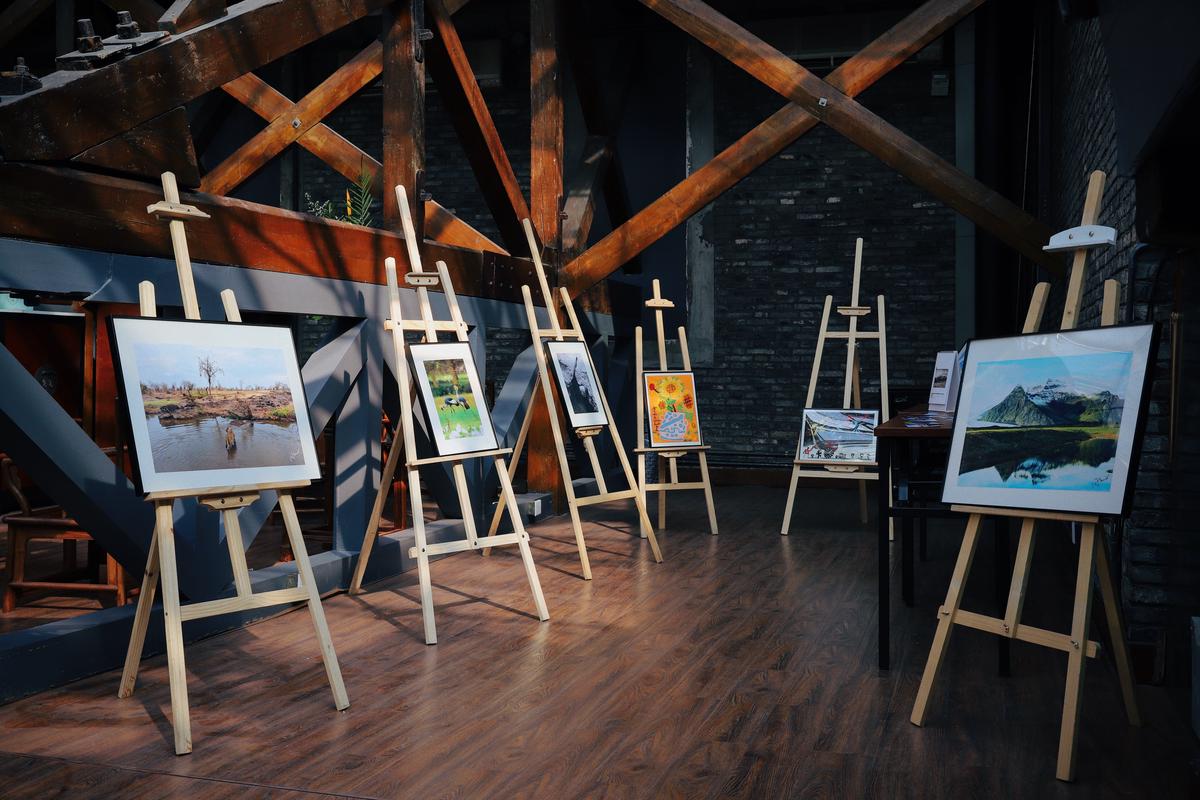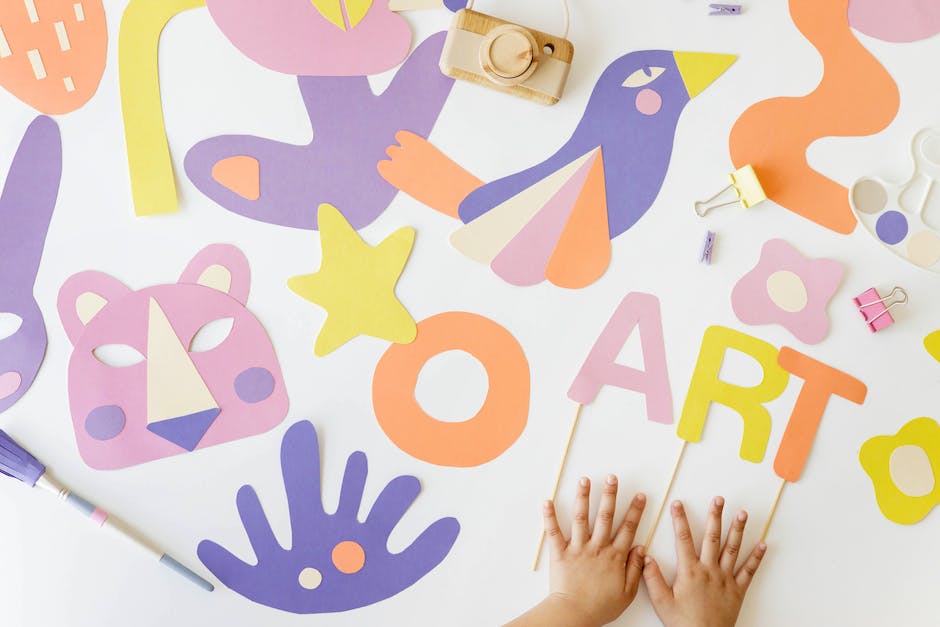Within the rich tapestry that forms the world of fine art, nothing can be as thrilling, or as mystifying, as art auctions. Illuminating the often enigmatic nature of this commerce, the aim is to equip any individual with the necessary knowledge to navigate this unique marketplace. From understanding the intricate mechanisms that bring an auction to life to dissecting international art market trends that dictate the ebb and flow of prices, this discourse will guide you through the labyrinth of auction strategy. Notably, one will comprehend the art of strategic bidding, the imperative conservation of provenance and the clandestine secrets behind profitable art investments at auctions. Essentially, this learning journey promises to make transparent the intricate dance of intrigue that is, the art auction.
Understanding Art Auctions and Their Workings
Art auctions are a fascinating confluence of finance, culture and commerce. They serve as open markets where the supply and demand of artworks determine their value. But why do these auctions hold such significance? What is their function within the art market and the economy at large?
Well, art auctions provide a transparent marketplace where both buyers and sellers can observe the intrinsic worth of various artworks. The fine art auction industry revolves around two major types: the primary and secondary markets. The primary market refers to works sold for the first time, ushering in artists’ debut into the commercial realm. The secondary market pertains to reselling the pieces to new buyers.
Art auctions excel at boosting visibility to diversely cultured artefacts ensuring the financial velocity needed in the art market. They expose artwork to a broader audience, hence allowing a substantial number of potential buyers to take interest – an effective showcase for the aesthetic appeal and monetary value of a piece.
Moreover, auctions act as the lifeblood of the global art market, driving its growth by generating sales and enhancing the allure for potential investors. In a broader sense, they impact the economy positively, mostly attracting high net individuals and corporates, spurring investment and consumption.
State-of-the-art technology propels this industry into the digital age. High-end auction houses embrace online platforms to generate even more substantial global accessibility and convenience. As a result, more competitive bids are placed in real-time without geographical restriction, optimising sales and fuelling a broader market reach.
An essential aspect often overlooked is validating an artwork’s significance. Auctions spark discourse around individual pieces, elevating them to cultural and historical prominence. An auction can authenticate an artist’s standing in the art world, amplifying their potential for future success.
Furthermore, from a philanthropic aspect, they highlight charitable auctions, which serve dual purposes. They generate a sustainable income source for non-profit organisations while enabling buyers to expand their collections.
Do art auctions matter then? Emphatically, yes – they have moulded the art industry into a thriving marketplace, promoting economic growth, enhancing cultural capital and ensuring artists’ recognition worldwide.
So, the next time an art auction spirals into a bidding war, it is not just about acquiring an illustrious piece of artwork. It’s a testament to the marriage of finance and culture, an open market’s power to determine value, and the significant impact these transactions can have on the individual artist, the broader art scene, and the global economy.

Strategic Bidding in Art Auction
Entering the realm of art auctions is an intriguing convergence of culture, taste and savvy investment strategy. It requires acute perception and a keen understanding of market dynamics, artist profiles and economic indicators. Let’s unravel smart bidding strategies that help navigate the colourful tapestry of art auctions.
A pivotal strategy is in-depth due diligence; never underestimate its importance. Acquiring art isn’t solely about aesthetics, but also the acquisition of assets with potential for appreciable value. Solidify background knowledge on the art piece, understand its historical relevance, artist’s portfolio and earlier sale records. Pay equal heed to future trends impacting an artist’s recognition and credibility. This interceptions of past, present and future aspects provides an empirically backed platform for deciding bids.
Success in art auctions necessitating strategic patience. Each piece opens for bidding at a reserved price, often leading potential bidders into an early joust. A proficient bidder understands the significance of pacing bids. Entering the bidding too early can spark a bidding war, inflating the price beyond reasonable margins. Thus, choosing the right moment to bid proves instrumental in securing artefacts at acceptable price points.
Price ceilings establish prudent fiscal boundaries. Once smitten by a piece, it’s easy to go overboard and strain the wallet, thus undermining the purpose of the investment. Before entering the auction, establish a maximum limit you’re comfortable spending, don’t deviate from it. It’s better to lose a piece than be saddled with dues.
Building healthy relationships within the industry, with gallerists, critics, artists, auctioneers and fellow bidders is invaluable. This network provides exclusive insights, recommendations and early access to coveted pieces. This immersion allows a bidder to stay several steps ahead in the game.
Art auctions often reveal unheralded talent worth investing in. Emerging artists may not have built prominent recognition but their work could harbour immense potential for appreciation. Discerning these opportunities in a sea of seasoned names requires forte and understanding of aesthetics, narratives and craftsmanship that carries forward the artistic legacy while innovatively addressing contemporary contexts.
Finally, engaging an advisor provides a critical edge for those new to this niche. For a percentage of the sale price, they provide expert insights, leverage their networks and do the heavy lifting on due diligence, allowing you to make informed bidding decisions.
Navigating the art auction world requires more than a discerning eye for beauty. It demands a blend of research, strategy, patience and a deep understanding of art as an alternative investment. These effective strategies can help sculpt fruitful journeys within the eclectic corridors of art auctions.

The Value of Provenance in Art Auctions
The Cruciality of Provenance in the Art Auction Environment
The universe of art auctions is a captivating one, where exciting bidding wars are but the tip of the iceberg. More than flamboyant buyers and resplendent artwork, the affair involves capital transfer on a sizable scale, the valuation of artistic creativity, and the delicate dynamics of supply and demand. Thus, not spontaneously but with deliberation, understanding the provenance becomes a cardinal aspect when valuing a piece of art.
Provenance is the fine thread that weaves together the past and present of an artwork. It imparts credibility to the artistic creation by charting its origin, past ownerships, and chronology of exhibitions, thereby corroborating its legitimacy and originality. It’s akin to inspecting the blueprint of an infrastructure before investing; such discerning actions mitigate the risk of encountering forgery or cultural misappropriation.
Pertinently, provenance offers a multi-layered perspective that transcends beyond the aesthetic value of art. It gives life to the artwork; illustrating the cultural and historical dynamics that underpin its existence. In art auctions, this aspect can have a powerful bearing – it can be the difference between a masterpiece’s successful sale or an unfortunate dismissal.
Art auction participants, equipped with antiquities’ provenance, gain persuasive leverage. They acquire exclusivity over the artwork’s historical narrative – an enriching part of the commercial transaction that reverberates with collectors and museum curators alike. These narratives facilitate emotional connections, enticing potential buyers and influencing bidding behaviours.
With visionary agility, savvy players in the auction circuit can optimize provenance to their advantage. Scrutinising an artwork’s past can unearth positive trends, the artist’s escalating reputation, or links to high-status former owners. Adroitly articulating these points can heighten the interest around the art piece, spurring a more competitive bidding environment.
In this digital era, the intersection of technology and provenance unlocks unprecedented potential. Blockchain-based platforms, enabled with artificial intelligence, can seamlessly authenticate, store, and update artwork provenance. Advancements such as these not only make due diligence more precise but also allows equitable participation from artists, dealers, and buyers.
In essence, comprehending provenance is a strategic fulcrum that can recalibrate the dynamics of art auctions. It can overshoot an artwork’s value, influence buyer psychology, mandate ethical practices, and simultaneously democratize the art auction landscape. Grasping its implications is no mere luxury; it is a necessity for thriving in this sphere. In the world of art auctions, provenance is indeed the ‘art of knowing.’

The Influence of Art Market Trends on Art Auctions
With market trends in constant flux, their pervasive influence on multiple industries not only demarcate boundaries but also facilitate progression. The vibrant world of art auctions is no exception. To extract maximum value from bidding strategies, it’s crucial to understand how market trends sway this unique business landscape.Art auctions are affected by factors unique to the art market. One such factor is the surge of young, wealthy collectors. This demographic shift is nurturing new dynamics in the auction world. Known to be more spontaneous and risk-taking, these young collectors tend to gravitate towards contemporary art, thereby inflating its demand and influencing what is being auctioned and at what price.
Simultaneously, globalisation is transforming the art auction market by extending its reach beyond traditional western countries. The rising influence of Asian collectors, particularly from China, testifies to globalization’s impact. This geographical ripple is gradually re-shaping the auction landscape, dictating the types of art in demand, and subsequently guiding the valuation and bidding processes of certain art pieces.
Social responsibility trends play a consequential role too. As sustainability climbs up the consumer agenda, auctions are increasingly showcasing eco-conscious art, also known as ‘sustainable art.’ Artworks that address themes such as environmental conservation, social equity, and cultural preservation resonate with values cherished by socially-conscientious bidders.
Current market trends also reflect a heightened focus on diversity and inclusion. There is growing demand for art that represents marginalized communities, fostering an era where bidders are no longer limited to seeking works from recognized western domains. A conscious intent to diversify collection portfolios to include works from underrepresented groups further fuels this trend, adjusting what is deemed valuable in the auction arena.
In an interconnected digital world, social media works as an amplifier of market trends. Platforms like Instagram have become key tools for galleries and auction houses to reach a global audience, stir up anticipation and fuel competition. It also influences buyer behaviour by effectively creating hype around certain works and artists.
Successfully adapting to these trends will differentiate the savvy bidder. Auctions that fail to evolve with the market trends could find themselves outpaced. It’s not just about understanding the value of art, but also appreciating the art of value as driven by these significant factors. Identifying and leveraging the convergence of these trends offer lucrative opportunities for those ready to engage in the fast-paced, ever-evolving world of art auctions.
Market trends and art auctions are not merely a transactional relationship. Instead, it is a dance, a push-and-pull that continually shapes and shifts the art auction landscape. As the saying goes, art is not only a mirror held up to reflect reality but also a hammer with which to shape it. Perhaps there’s no greater testimony to this than the dynamic world of art auctions. Keep an eye on the trends; they’re your key to unlocking your potential in the thrilling sphere of art auctions. The auction hammer is poised; the question is, are you?

Secrets behind Successful Art Investment at Auctions
The fast-growing world of art auctions is an aboveboard treasure trove ripe with opportunities for savvy investors who are keen on expanding their portfolio. If you have a keen eye for art, coupled with acute business acumen, investing in art via auctions can prove to be immensely profitable.
Now, let’s delve into some unprecedented and lesser-known dynamics that are reshaping the realm of art auctions and consequent investment strategies:
The Impact of Young, Affluent Collectors:
Art auctions have witnessed a surge in young and affluent collectors seeking to make their mark in the field. This savvy demographic indulges in art as a matter of earnest passion, social status, investment, and sometimes, a mix of all three. They are quick to seize the opportunities presented by new and emerging artists, contributing to changes in market trends and bidding behaviour.
Globalisation Influences Art Valuation:
As globalisation intertwines economies and cultures, so does it influence the world of art auctions. The tastes of collectors are no longer confined to their geographic boundaries or regional artists. These changing preferences are significant in determining the valuation and desirability of art pieces.
The Rise of Eco-Conscious and Sustainable Art:
Art auctions are witnessing an increased demand for eco-conscious and sustainable art, reflecting the wider societal shift towards environmental responsibility. Collectors keen on such art contribute to redefining the art scene, as well as influencing the kind of pieces that fare well at auctions.
Demand for Diversity and Inclusion:
A paradigm shift in societal attitudes towards inclusivity and diversity is reflected in art auction trends. Additions from underrepresented and diverse artists are increasingly desirable, both for their unique perspectives and the important socio-political discourse they often embody.
The Influence of Social Media:
Social media platforms, particularly Instagram, have emerged as potent game-changers, shaping buyer behaviour and moulding taste. The hype created around certain art pieces or artists on these platforms greatly influences their success at auctions.
Adaptation of Auction Houses:
Staying competitive in the dynamic landscape of art auctions necessitates strategizing in alignment with market trends. The ability of auction houses to tune into these trends plays a pivotal role in their standing in the industry, as well as the success of buyers and sellers.
Market Trends Interlink with Auction Landscape:
Art auctions do not operate in a vacuum; they are intrinsically linked with broader market trends. Therefore, capturing proven investment success in this sector hinges on one’s ability to understand and leverage these trends.
Leveraging Trends for Investment Success:
With expanding trends, the auction world has become more disparate and complex. Yet, this scenario also holds potential for those discerning enough to identify and leverage the convergence of these trends.
Art auctions are much more than just an arena of frantic bidding wars. They represent a fusion of global cultures, trends, and technological advancements. More importantly, art auctions, with their subtleties and complexities, hold immense potential as an unconventional yet lucrative investment avenue for those willing to explore beyond the tried-and-tested paths.

When armed with a deep comprehension of art auctions and their workings, the acts of bidding and buying are demystified, opening up the potential for more strategic and profitable ventures. Embracing the premises of provenance and understanding how art market trends influence auctions, can underscore your steps towards insightful purchases. Moreover, if your objective is setting foot into the realm of art investment, grasping the fundamentals of comprehensive market research and practising risk management in your art portfolio will prove imperative. As one builds knowledge and expertise, the intriguing world of art auctions ceases to be a confounding labyrinth, and instead, becomes an inviting arena of potential treasure.
























